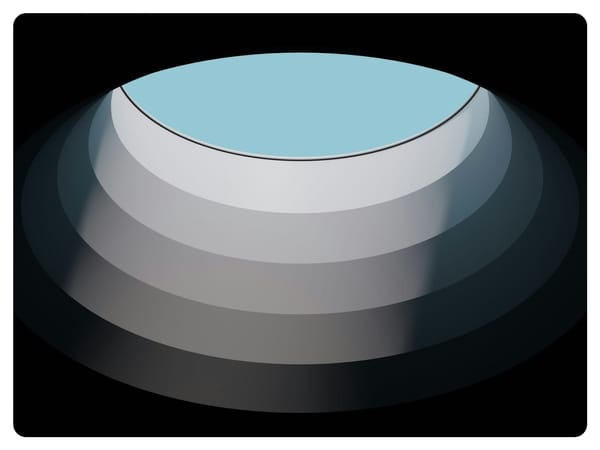MVVM vs MVI: Which Architecture Suits Your Kotlin Multiplatform Project?

When developing mobile applications with Kotlin Multiplatform (KMP), choosing the right architectural pattern is crucial for the maintainability, scalability, and overall success of your project. Among the most popular architectural patterns are MVVM (Model-View-ViewModel) and MVI (Model-View-Intent). While both patterns aim to separate concerns and improve code organization, they have fundamental differences that can significantly impact your project.
In this post, we'll explore the key differences between MVVM and MVI, their pros and cons, and how to choose the best architecture for your Kotlin Multiplatform project.
What is MVVM?
MVVM (Model-View-ViewModel) is an architectural pattern that facilitates the separation of the UI and business logic. It consists of three primary components:
- Model: Represents the data and business logic of the application. The Model is responsible for fetching, processing, and managing data.
- View: The UI layer that displays data to the user. It observes the ViewModel for changes and updates the UI accordingly.
- ViewModel: Acts as a bridge between the Model and the View. It handles the presentation logic, updates the View based on Model changes, and processes user interactions.
Benefits of MVVM
- Separation of Concerns: MVVM separates the UI from the business logic, making the codebase easier to maintain and test.
- Reusability: ViewModels can be reused across different Views, improving code reusability.
- Data Binding: MVVM works well with data-binding frameworks, reducing boilerplate code and enabling automatic UI updates.
Drawbacks of MVVM
- Complexity: Implementing MVVM can introduce complexity, especially in larger projects where ViewModels become bloated.
- Overhead: Managing the communication between the View and ViewModel can sometimes lead to excessive boilerplate code.
What is MVI?
MVI (Model-View-Intent) is a reactive architectural pattern that focuses on unidirectional data flow. It is particularly popular in reactive programming environments. MVI consists of three key components:
- Model: Represents the state of the UI. In MVI, the Model is a single immutable state that drives the UI.
- View: The UI layer that renders the Model and dispatches user actions as Intents.
- Intent: Represents user actions or events. Intents are processed by the Model, which produces a new state that the View renders.
Benefits of MVI
- Unidirectional Data Flow: MVI's unidirectional data flow simplifies state management and makes the application's behavior more predictable.
- Immutable State: By using a single immutable state, MVI makes debugging easier, as the entire state of the UI is captured at any given time.
- Reactive Programming: MVI integrates seamlessly with reactive programming paradigms like Kotlin Coroutines and Flow.
Drawbacks of MVI
- Learning Curve: MVI's concepts, especially unidirectional data flow and immutable state, can be challenging for developers unfamiliar with reactive programming.
Key Differences Between MVVM and MVI
1. Data Flow
- MVVM: Bidirectional data flow between the View and ViewModel. The View observes the ViewModel, and the ViewModel updates the View.
- MVI: Unidirectional data flow where the View dispatches Intents, and the Model generates a new state that the View renders.
2. State Management
- MVVM: The state is managed within the ViewModel, and the ViewModel exposes observable properties to the View.
- MVI: The entire state is represented by a single immutable object, making it easier to track and manage UI states.
3. Complexity
- MVVM: Simpler for smaller projects but can become complex with larger ViewModels in bigger projects.
- MVI: More complex initially due to the need to manage intents and states but offers more predictability in behavior.
4. Testing
- MVVM: Easier to unit test individual components like ViewModels, but integration tests can be challenging due to bidirectional data flow.
- MVI: The unidirectional flow and immutable state make it easier to write comprehensive unit and integration tests.
When to Use MVVM
- Smaller Projects: MVVM is generally simpler to implement in smaller projects with less complex state management needs.
- Existing Frameworks: If you are using Android’s Jetpack components or data-binding, MVVM can be more straightforward to integrate.
- Reusable Components: MVVM is a good choice when you need reusable ViewModels across different screens or platforms.
When to Use MVI
- Complex State Management: MVI shines in projects with complex state management requirements, where unidirectional data flow simplifies the logic.
- Reactive Programming: If your project heavily relies on reactive programming principles (e.g., Kotlin Coroutines, Flow), MVI provides a more natural fit.
- Predictable UI Behavior: When predictable and debuggable UI behavior is a priority, MVI’s immutable state makes it easier to track and reproduce issues.
Conclusion
Both MVVM and MVI have their strengths and weaknesses, and the choice between them should depend on the specific needs of your Kotlin Multiplatform project. MVVM offers simplicity and ease of use, especially for smaller projects or when leveraging existing frameworks like Android Jetpack. MVI, on the other hand, provides a more robust approach to state management, making it ideal for complex applications that benefit from unidirectional data flow and immutable state.
By understanding the key differences between MVVM and MVI, you can make a more informed decision and choose the architecture that best suits your development goals.

Take Your Android Development to the Next Level
Let’s build something amazing together. Get in touch to explore how I can assist you in bringing your Android app ideas to life with the best practices in modern Android development.

